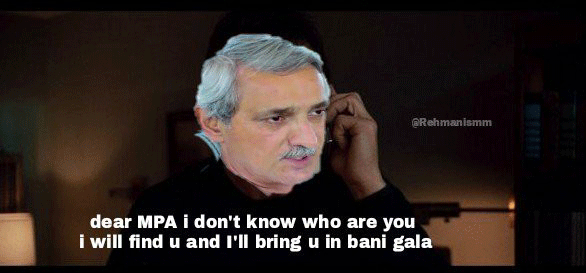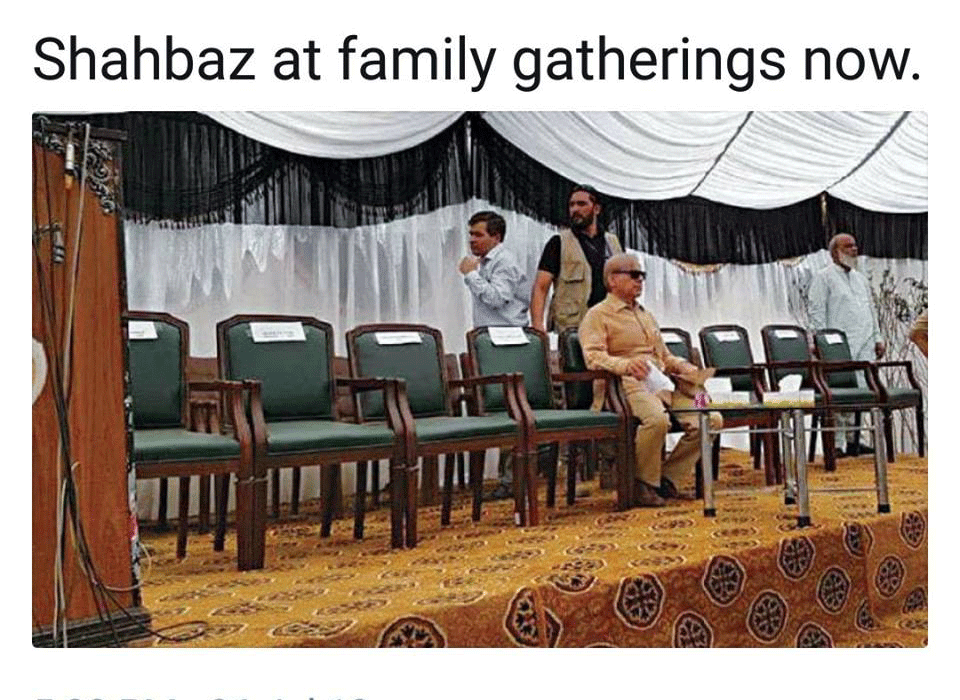It’s All in the Memes
By Aasim Zafar Khan | Media | Published 7 years ago

In the aftermath of the elections, and during the lead-up to the formation of the government, the internet was flooded with memes of Jahangir Tareen (JT) doing Khan’s bidding. He was trying to rope in enough independents for the Pakistan Tehreek-e-Insaf (PTI) to form a government, both in the centre and Punjab. While the memes were downright hilarious, they were more than just that; they pointed to the widespread belief that JT, with his private helicopter and gunny sacks full of cash, is the go-to man for Khan, when he needs to get something done.
It’s not like memes are anything new. Or that they target one specific party, or person. In fact, it would be safe to say that memes (and by extension memeologists) spare no one. Case in point being the US President, Donald Trump, who has perhaps been the subject of more memes and ridicule than anyone else in history. Even the English football team, with their ‘It’s coming home’ slogan, found itself on the receiving end of some viciously funny memes after it crashed out of the World Cup. Locally, all party heads and leaders have been subjected to some intense scrutiny via memes.
In its purest form, a meme is a funny take on any subject matter. But that does not necessarily mean that the main purpose is humour. Far from it. A case in point is an old Saudi meme, which reads: “If you can’t take the flogging, don’t do the blogging.”

While to some, this may seem humorous (you need some help if it does), what the meme really points at is the Saudis’ utter unwillingness to allow any form of criticism or independent opinion within the Kingdom, and what the repercussions will be, if someone (anyone) decides to go ahead.
However, the most important benefit of memes is that the art form – yes, memes are exactly that, a platform for expression, hence, art – provides the public with an effective medium through which it can take on the state – its policies and actions, or lack thereof. It is widely accepted that the space for freedom of expression in Pakistan has shrunk considerably. On TV, in the papers and on the internet, people are wary. Of speaking their minds, of voicing their concerns, and of generally speaking the truth.
Memes are their way out. And it sounds easy enough. All you need is a thought, a picture and a working internet connection. But that’s only partially correct. To be able to make a poignant meme, one needs to know the backstory. Of the person, party, or action in question. And then have the ability to come up with something snappy, with as few words as possible, and that too, in the quickest possible time, before the internet moves on to other petty matters.
The term was coined, way back in 1974, by Richard Dawkins, who wrote that a meme is a thought or concept that moves from brain to brain, within a culture, evolving and mutating as it moves. But there was no internet back then. So what was Dawkins talking about? Probably popular culture and opinion. Funnily enough, memeologists haven’t spared Dawkins either.
Dawkins, being the opportunist that he is, recently said that memes today are much like the thought he introduced in his 1974 book, The Selfish Gene: “I did actually use the metaphor of a virus. So when anybody talks about something going viral on the internet, that is exactly what a meme is…”
Which brings us to a most important point. Virality. If a meme doesn’t go viral, and nobody gets to see it, is it even a meme?
Because virality and memes go hand in hand, the short answer is no, it’s not really a meme if it didn’t go viral. You still get an ‘A’ for the effort, though.

As mentioned before, at the heart of most memes, is humour. And as we all know, history has proven that humour, in all its forms – chants, poems, songs, theatre and the like – is the most powerful. Not only does it act as a glue, bringing people together for a cause, it also works to undermine the person or the idea it is targeting.
The question is, are they listening? Or in this case… viewing. In the case of US President Donald Trump, who is an avid internet and social media user, the answer is yes. But are they reacting to it?
So far, no. But if they were to respond, it would be a quick ride through mud drive, because whatever the response would be, it would in turn lead to hundreds more. Still, the idea here is not to draw a reaction as much as it is to ridicule. Anything more is a bonus.
Still, as with everything, there is a dark side to memes. For every meme that has the pulse of the people, there are others which work to create problems. From minorities, to people with disabilities, spreading hate, inequality, and creating uncertainty, the meme-osphere has no limits.
Just like art.
The writer is a journalist based in Lahore. He is the current managing editor of MIT Technology Review Pakistan, a bi-monthly science and technology magazine.


